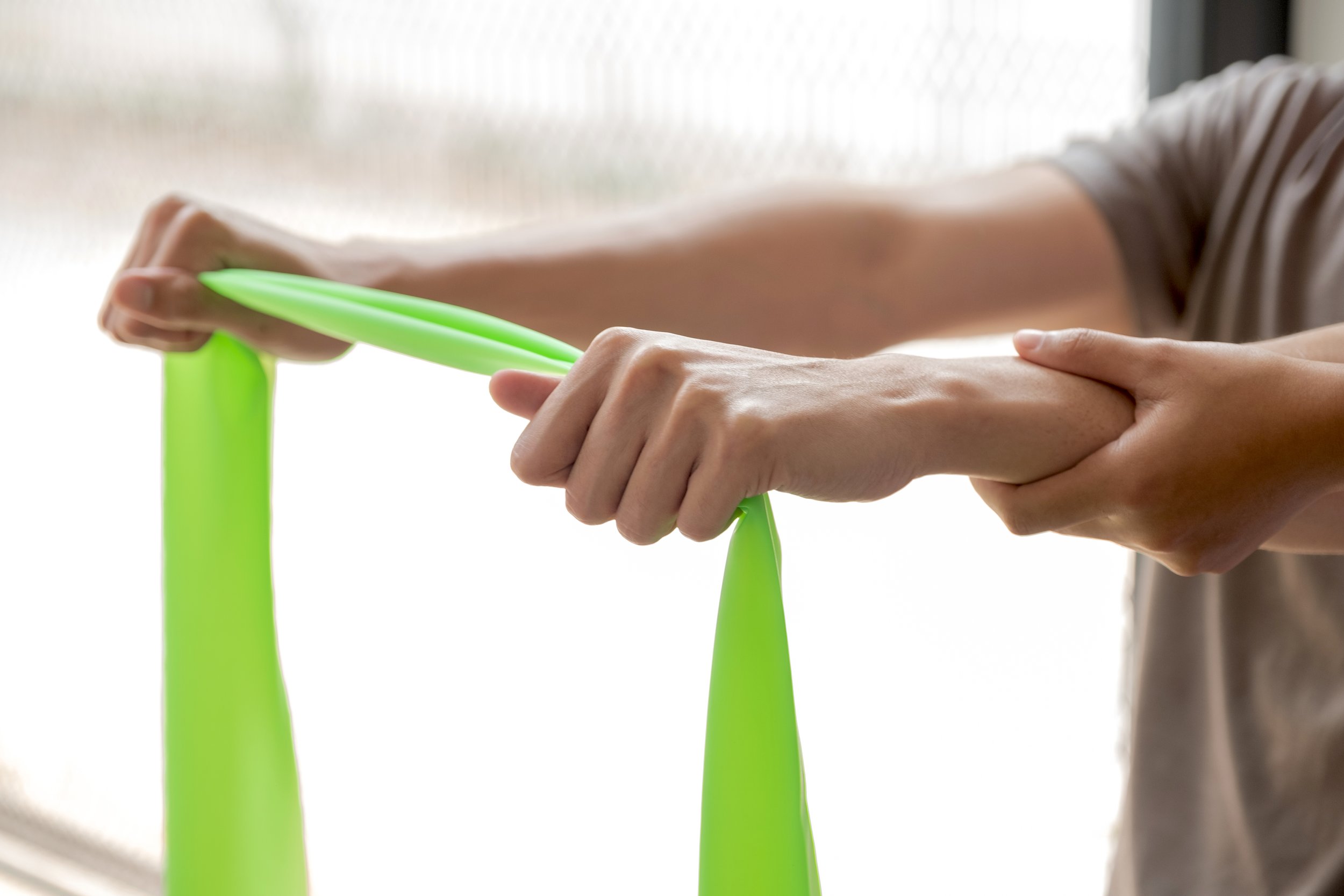
Services
We evaluate, treat, and implement personalized programs for:
Back pain
Neck pain
Shoulder pain
Knee pain
Ankle pain
Chronic pain
Sports injuries
Arthritis
TMJ/Facial Pain
Joint and Muscle Pain
Post surgical therapy
Headaches
Elderly Fall-Prevention Programs
Orthopedic Injuries
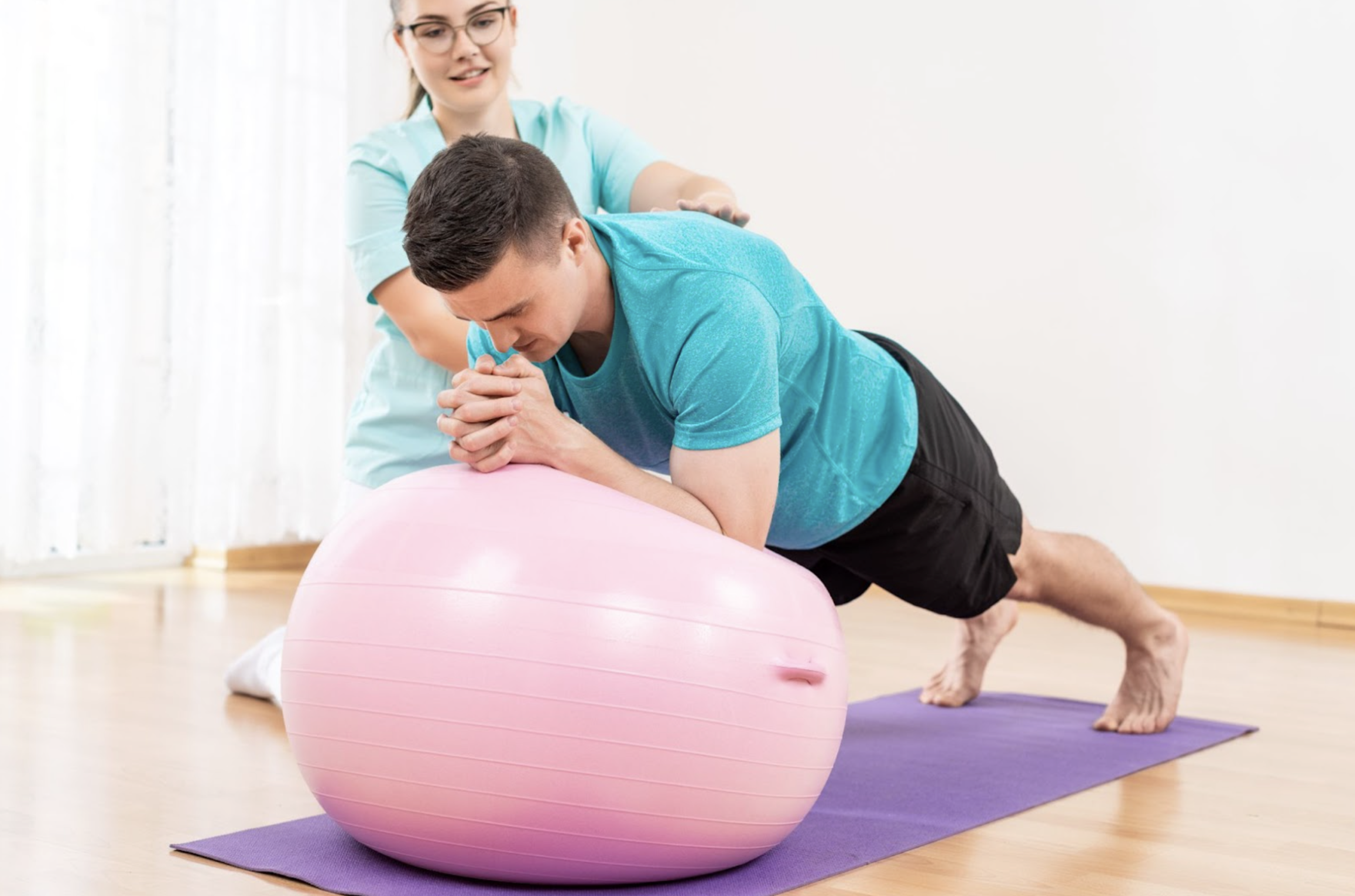
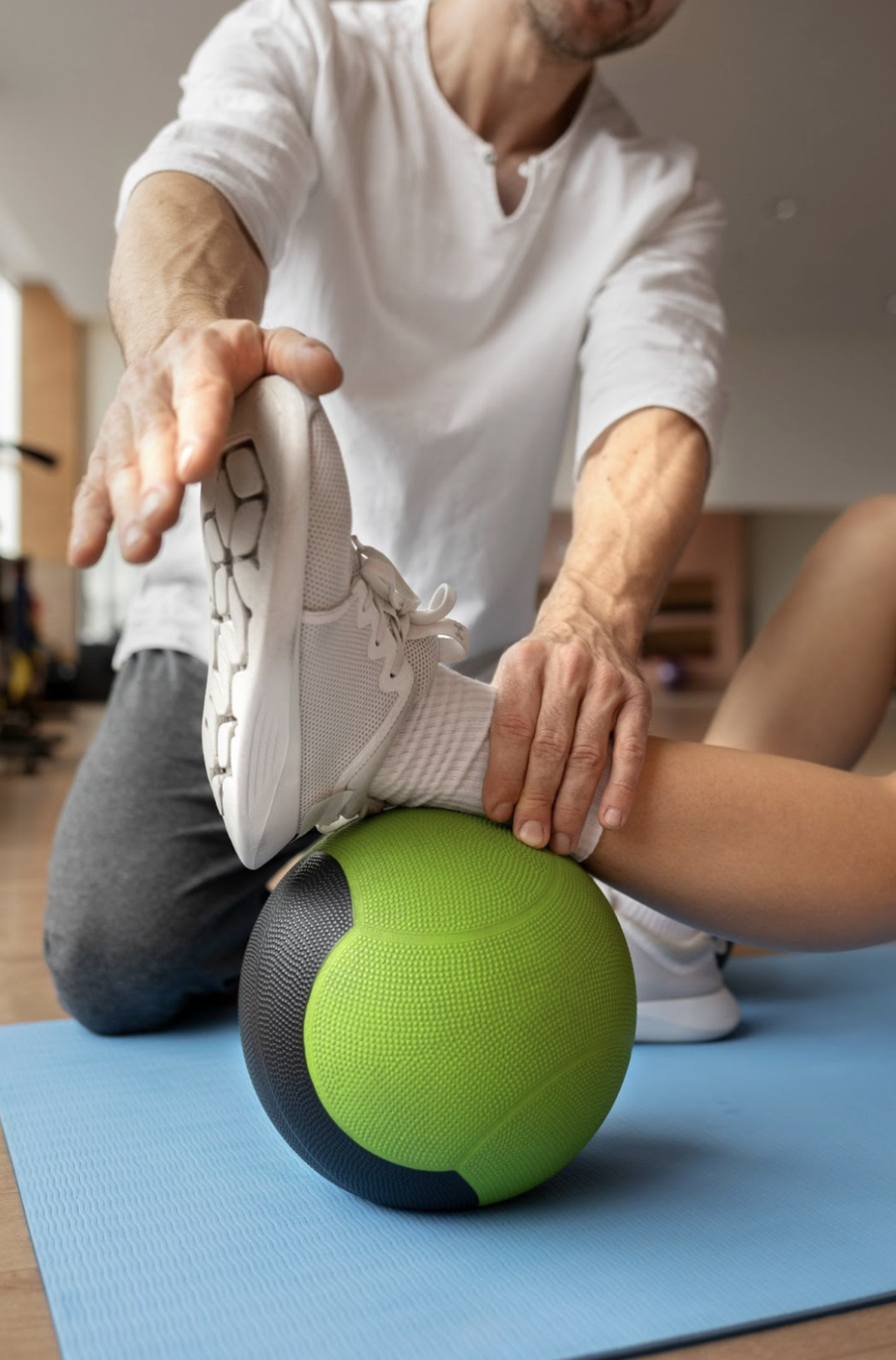
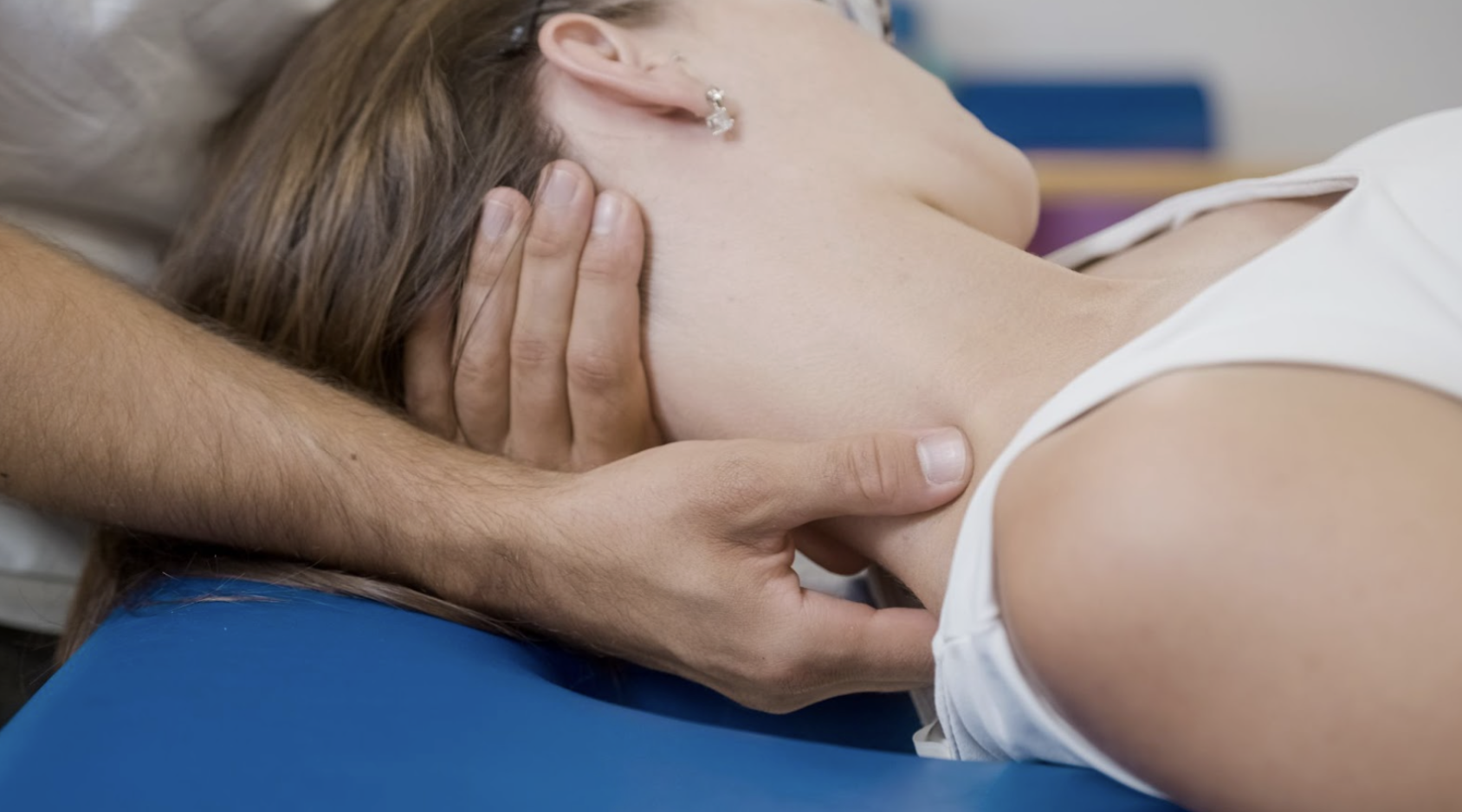
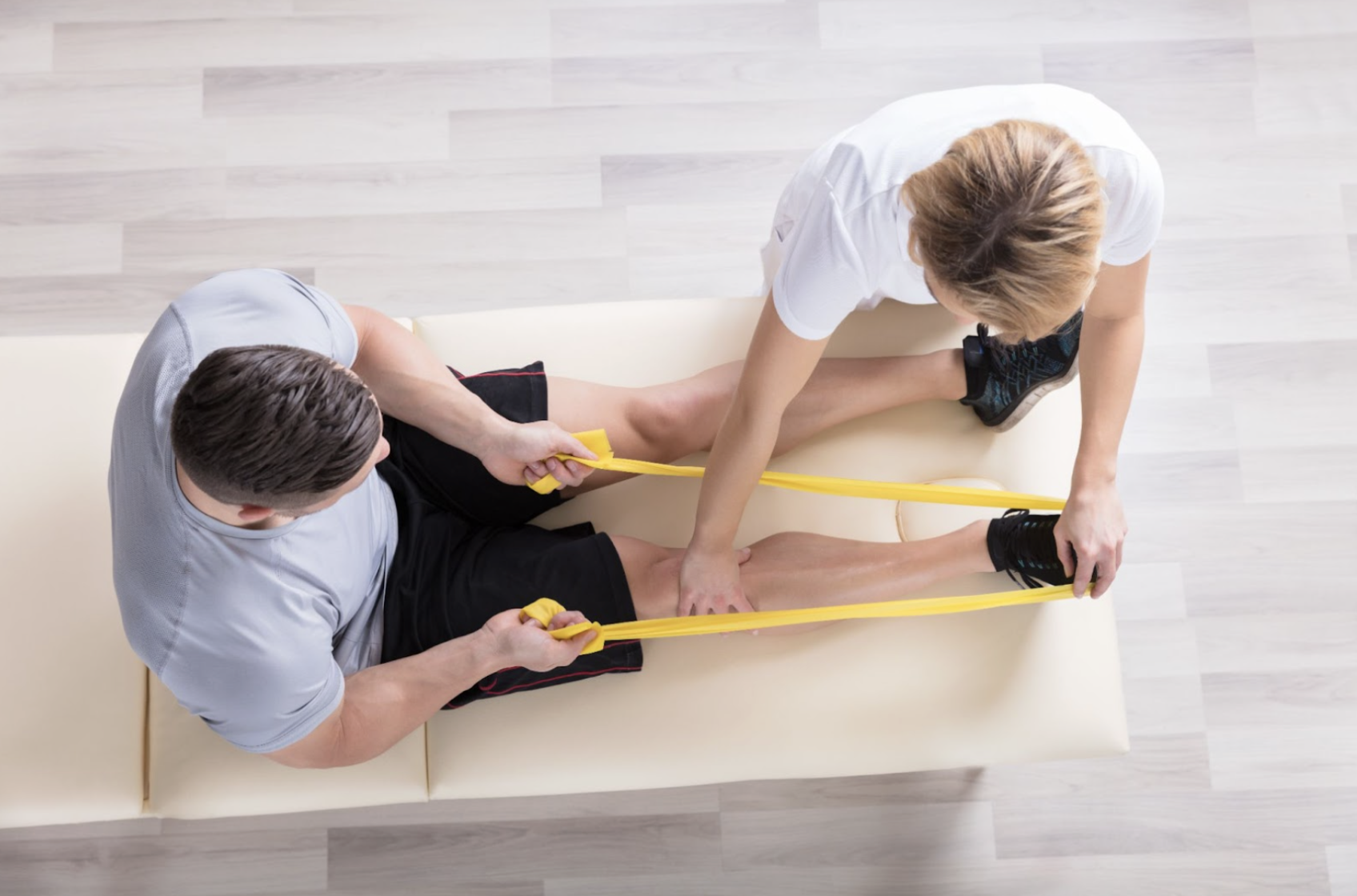
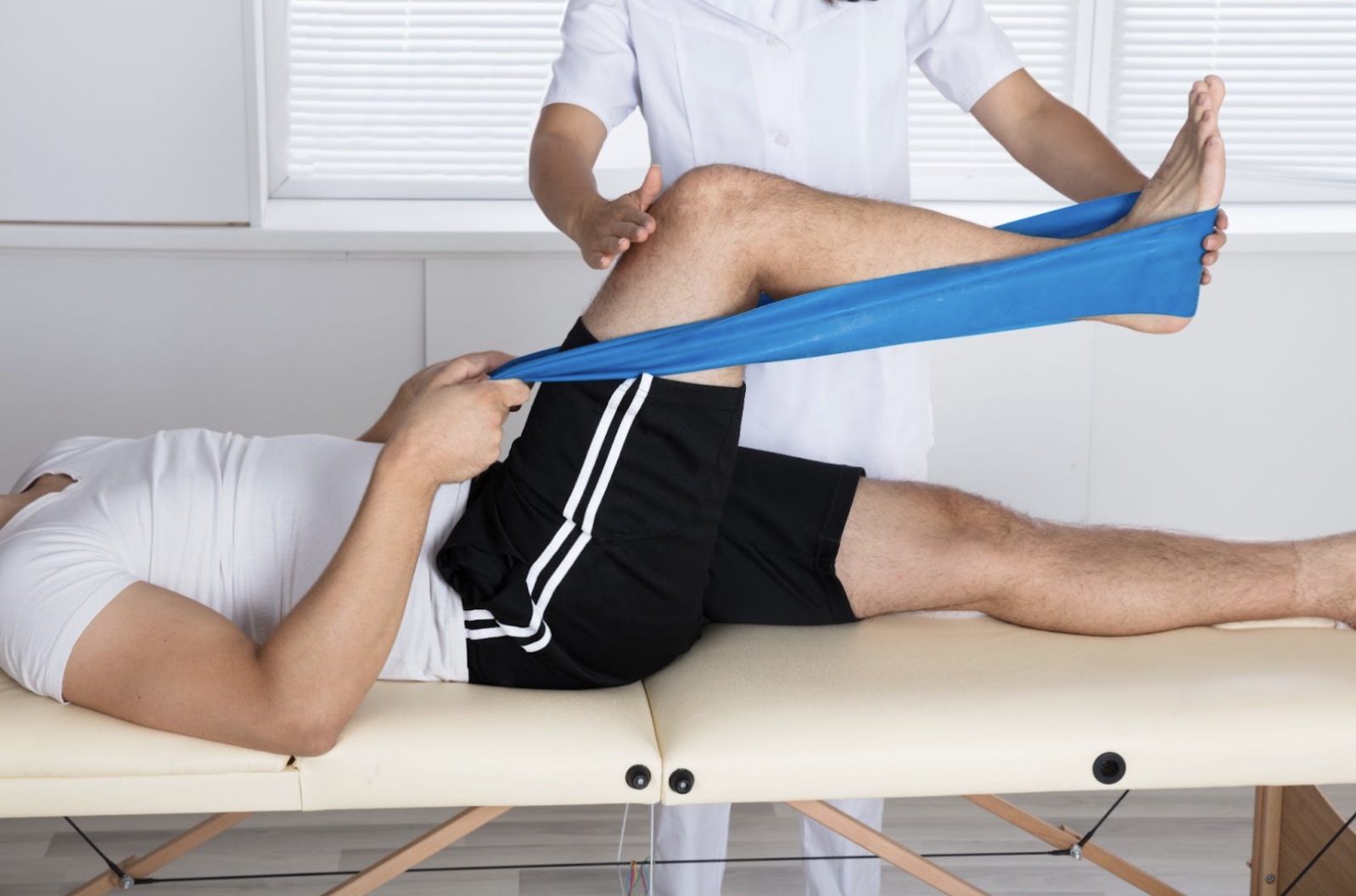
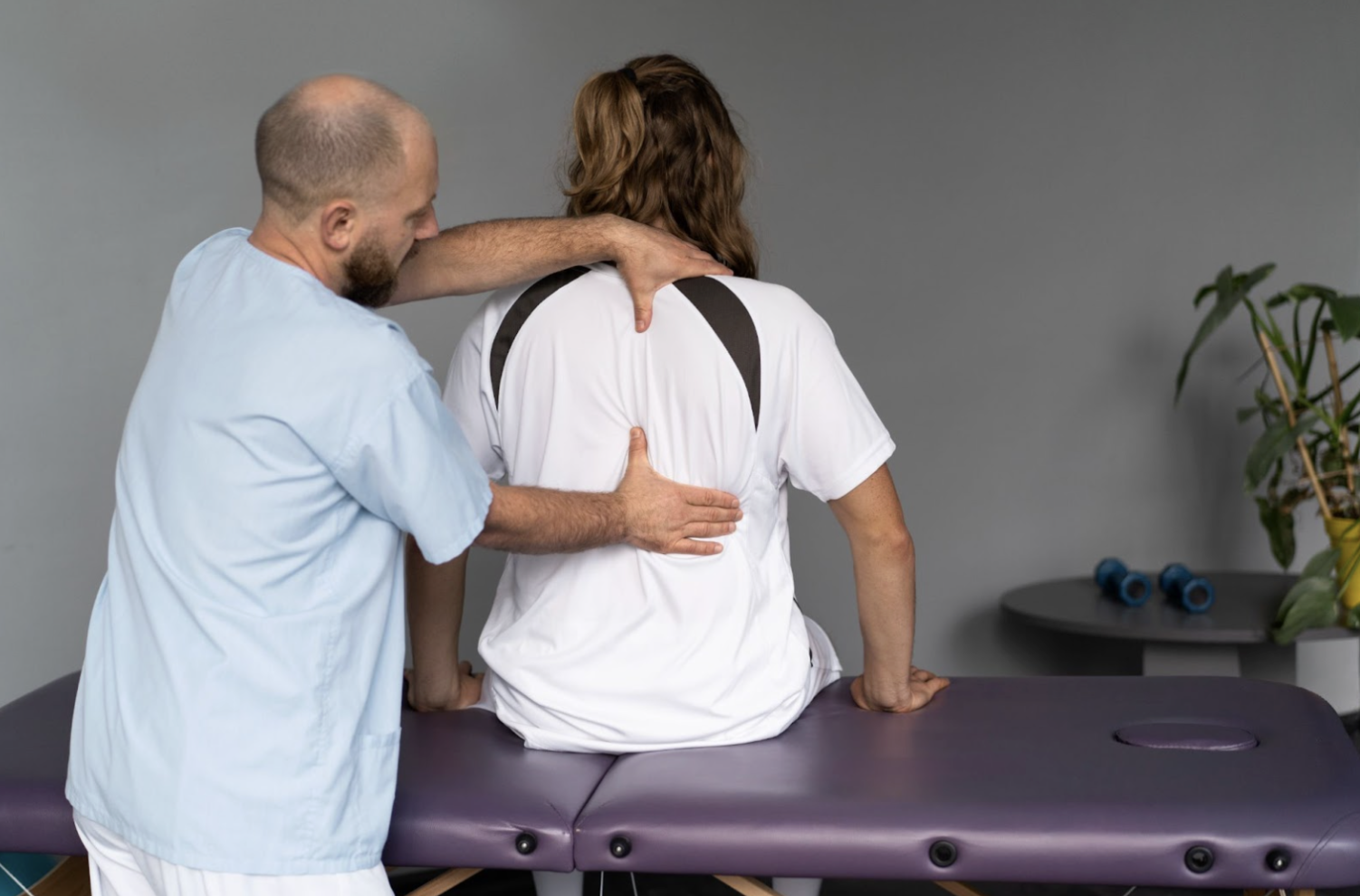
What we can help with:
-
According to the American Physical Therapy Association, back pain is the most commonly reported pain across the nation, and one out of every four Americans has experienced back pain in the past three months.
In many cases, back pain develops as a result of an injury. Injury can occur due to any number of reasons ranging from repetitive straining motions like reaching down multiple times throughout the day to pick up a toddler, to sudden trauma, such as a motor vehicle accident. Conditions such as herniated discs and degenerative diseases also can be present that can be causes for back pain.
Many people don’t realize that the underlying problem of poor joint movement, core weakness, and poor muscle coordination, will set them up for a future back injury that can be prevented.
Many people will also rely on medications to give temporary relief from their back pain. However, numbing your pain with painkillers is just masking the underlying problem. Your body is telling you there is a deeper root cause that needs to be fixed. Physical therapy should be your first treatment of choice. It eliminates your need for harmful painkilling drugs, such as opioids, and possibly will help you to avoid an invasive surgical procedure in the future.
Back pain is completely treatable through physical therapy. Our physical therapist creates an individualized treatment plan that is dependent upon your diagnosis. Our expert physical therapist will focus on relieving your pain initially. As your pain reduces, the focus will be on strengthening your core muscle. Our physical therapist will help you increase your strength and range of motion to prevent re-injury of your spine. In addition, we teach you ergonomics and ways to make sure you know how to take care of your spine, avoiding future problems.
-
There are many reasons for neck pain, which can run from the base of your skull to the top of your shoulder blades and settle in the back of the neck. The pain also can vary in severity and type, from a persistent dull ache to sharp, pinching pains.
Physical therapy is one of the best methods for treating neck pain. Our physical therapists will evaluate and analyze the range of motion in your neck, as well as any limitations you have due to your pain. A treatment plan will be implemented which will reduce the stiffness of your neck and improve its range of motion. Our physical therapists will also provide you with targeted exercises that will strengthen, build, and improve the muscles and tissues in your neck as well as improving your posture to aid in the recovery of your neck muscle avoiding re-injury in the future. Additional treatments will be applied as our expert physical therapist deems fit.
-
The shoulder has the greatest range of motion compared to all the joints in your body. However, with its complexities also comes the increased possibility of injury that causes shoulder pain and discomfort. As an amazing “ball-and-socket” joint, the head of the upper arm bone, or “humerus,” fits perfectly in the corresponding space within the shoulder blade or “scapula.” The ends of the humerus are protected by a thick layer of cartilage, protecting the bones from rubbing together. When there is a slight issue with any of these parts, you can have pain and discomfort which our physical therapist can assess and treat. Some common issues with shoulder pain can be related to impingement, arthritis, tendonitis, adhesive capsulitis or “frozen shoulder,” rotator cuff tear, and others.
Physical therapy is a natural, easy, and comfortable way to find relief for your shoulder pain without the need for continual habit-forming drugs or invasive surgery. At New West, our physical therapists are experienced experts and trained to accurately assess the cause of your pain through a variety of diagnostic techniques. During your evaluation, the physical therapist will examine your medical history, range and mechanics of your joint motion, strength, coordination, and joint mobility.
An individualized therapy plan will be created to relieve your pain and restore normal joint movement. Our physical therapist will also teach you techniques to enhance your strength and help you prevent the recurrence of future shoulder problems.
-
The movement of your hips and knees give you the ability to stand, walk, run, and dance without falling over. It is vital that you have a proper functioning knee and hip and when you have pain in either hip or pain or both, you can really decrease your quality of life on a daily basis. Hip and knee pains can be experienced together or separately, but it is important to note that as the old saying goes, your knee bone is connected to your hip bone, therefore what happens with one, affects the other. Your hip is a ball-and-socket joint that works to support the weight of your upper body, relying on multiple muscles and tissues to keep it mobile and stable so it can move properly. Your knee is a hinge joint, confined to forward-and-backward motions. A stunning fact is that your knees support more weight than the hips and even 6 times your body weight when doing a squat!
The hips and knee work together kinetically so when one is out of balance, stress can be placed on the other. Pain can occur due to a variety of reasons like from injuries like strains, sprains, dislocations, overuse, or from disorders and diseases.
Our physical therapists will examine your hip and/or knee for signs of misalignment or structural damage, in addition to examining your stance, posture, gait, and range of motion. In many cases, our physical therapist can relieve your pain altogether, sparing you the need for potentially harmful medication or surgical correction.
After your evaluation, our physical therapist will prescribe an individualized therapy plan aimed at relieving stresses and strains, normalizing your joint function, strengthening the core, lower back muscle, abdominal muscle, or pelvic muscles to help with posture and even out the weight load that might be also causing the hip and knee pain.
-
Your feet and your ankles are composed of complex mechanical structures that must work together in order to function at their optimal level. The ankle joint is composed of three bones that act together along with the various connective tissues that hold the joints together.
The foot is even more complex, consisting of about two dozen bones, 30 joints, and over 100 muscles, tendons, and ligaments. Pain in the ankle and foot are very common occurrences and can be caused by various factors due to its complexities, which can impair you to take on daily tasks such as walking and cause a great burden to you and to those around you.
Foot and ankle pain can occur suddenly due to an acute injury, or it can develop over time in relation to a chronic, underlying condition. According to the Mayo Clinic, there are several common causes of foot pain and ankle pain, including: strains and sprains, arthritis, bursitis, tendonitis, fallen arches, fractures, plantar fasciitis, tarsal tunnel syndrome, and others.
Whether you are suffering from an acute injury or chronic condition in your foot or ankle, you can find relief through physical therapy. Physical therapists will conduct a thorough examination to find what is causing your pain, and then a personalized treatment plan will be created for you specifically.
Our physical therapist will implement an individualized treatment plan to relieve pain, improve circulation, restore joint mobility, improve balance, and strengthen the foot and ankle muscles.
We can also evaluate and recommend lifestyle changes or orthotic footwear to prevent more problems in the future.
-
Pain can sometimes linger for days, weeks, or even months. Chronic pain is a constant discomfort that lasts for 3-6 months or longer. There are several reasons why people may experience pain, but it most commonly occurs due to accidents, overuse injuries, diseases, and surgery. It can greatly hinder your quality of life by limiting your mobility, creating a dependence on prescription drugs, or even causing anxiety and depression.
One of the main goals of physical therapy is pain relief, and discovering the root cause of the pain to treat it, rather than masking symptoms with medication.
Our expert physical therapists will evaluate and treat the underlying issue that is causing the chronic pain and implement an individualized therapy plan to help restore your quality of life.
-
The term “sports injury” encompasses any type of injury that occurs while performing an athletic activity. For example, it can happen when one lifts heavy weights at the gym, or by swinging a bat too aggressively, or being tackled on the football field, or rolling your ankle on the soccer field. It is vital that the rehabilitation process from a sports injury starts as soon as possible because this will prevent further injury or complications in the future. Your treatment plan and duration of recovery will vary depending on how severe the injury is, your health history, and whether or not the injury requires surgical intervention. Proper physical therapy can bring you up to speed and playing your sport safely and quickly. Usually therapy will start after performing a diagnostic exam and the review of diagnostic tests, such as X-rays, MRI, or ultrasound. Treatment plans will take into account the nature of your injury, your fitness level, and your lifestyle.
-
Arthritis is a common condition that many people experience, but choose to live with for far too long before seeking help. According to the Arthritis Foundation, arthritis affects over 50 million people and it is currently the leading cause of disability across the nation. Arthritis causes pain, inflammation, and it can affect one or multiple joints at once. It manifests as stiff or tight joints that may ache in the morning or throughout the day.
As the most commonly experienced arthritis, osteoarthritis can occur due to injury, damage to the cartilage or surrounding muscles of joints, overuse from repetitive motions, or even from being overweight since there is strain being put on your knees and hip joints. Rheumatoid arthritis is an autoimmune disease. It is referred to as “inflammatory arthritis,” and causes soreness around joints, which is worse after prolonged sitting, standing, or inactivity.
At New West Physical Therapy, we will assess what methods will be beneficial in providing pain relief for your arthritis during everyday activities and help you prevent injuring yourself in the future. Our physical therapists will implement in-clinic and at-home therapy plans to restore normal motion of your joints, improve the strength of supporting muscles, and help you increase your range of motion in painful arthritic joints.
-
Temporomandibular joint dysfunction, also known as TMJ dysfunction, is a condition that causes pain and stiffness of the jaw joint and its surrounding muscles. The temporomandibular joint connects your jaw to your skull and is comprised of bones, tendons, and muscles. TMJ dysfunction develops when there is an injury to this joint or it becomes damaged in any way. This can cause pain and make it very difficult to open your mouth, talk, yawn, and chew.
If you have jaw pain, have difficulty chewing or yawning, or hear a clicking noise when you open and shut your mouth, you could be suffering from TMJ dysfunction.
Some common causes of TMJ dysfunction include misalignment of the teeth, gum chewing, arthritis, teeth grinding, or a jaw injury.
At New West Physical Therapy, our physical therapist will evaluate your jaw, neck, shoulder girdle, and thoracic spine in order to determine what is causing the symptoms. You will be given a treatment plan tailored to your specific needs to restore normal function and interaction of the jaw muscles and joints.
-
Physical Therapists are movement scientists and experts in the anatomy & physiology of the musculoskeletal system. For this reason, our knowledgeable expert physical therapists are here to assess and address your pain, weakness, or mobility issues with your muscles and joints.
Some common causes of joint and muscle pain are: Acute trauma or repetitive microtraumas that lead to the development of stress on muscle fibers and the formation of “trigger points.” These are a common source of regional, persistent pain resulting in a decreased range of motion in the affected muscles and impaired function; Muscle Strain – Also referred to as a muscle pull or muscle tear, which occurs when a muscle and/or its tendon exceeds its capacity to handle a load and becomes damaged as a result; Joint Sprain – Also referred to as a ligament sprain which occurs when one or more ligament of a joint exceeds its capacity to handle a load and becomes damaged as a result. This is usually caused by a rapid overstretching of the ligament from a sports injury or fall but occasionally ligaments are sprained from repetitive overuse microtraumas; Arthritis – The literal translation for this term is “joint inflammation.” There are more than 100 types of arthritis but the most common type is osteoarthritis or degenerative joint disease. Arthritis results in joint pain, swelling, and stiffness; Tendinitis – inflammation of a tendon causing pain, swelling, as well as loss of motion and strength; Bursitis– This involves inflammation of the fluid-filled sacs that provide cushioning and lubrication around joints. It results in pain, swelling, and impaired movement and most commonly occurs in the shoulder, elbow, and hip.
Our expert physical therapists are professionals who have undergone extensive training in order to examine, diagnose, and treat musculoskeletal issues like arthritis, bursitis, sports injury, strains, sprains, and other conditions related to the muscles and joints. At New West Physical Therapy, you will receive effective, individualized care that will help restore your quality of life by alleviating your joint and muscle pain.
-
Any type of surgery can be considered a form of trauma and can affect the body differently. Even minor and uncomplicated surgical procedures can have a major impact on your health. Because of this, post-surgical rehab with a physical therapist is especially important, in order to make sure everything goes smoothly after your operation is done.
Individualized post-surgical rehab not only minimizes your pain and accelerates your rate of healing, but it can also reduce the chances of postoperative complications, including infections, bleeding, blood clots, muscle weakness, scar tissue, decreased function, and other factors that can negatively impact your long-term health.
Another critical reason for selecting post-surgical physical therapy is its ability to help you reduce or completely avoid prescription painkillers, including opioids. An opioid epidemic is currently gripping the country and impacting every socioeconomic class. According to the CDC, an estimated 115 people every day die from an opioid overdose, and upwards of 29% of people prescribed opioids will end up misusing these dangerous drugs.
For this reason, the CDC advises people to choose physical therapy over prescription painkillers whenever possible.
-
There are several categories of headaches. One category is what is known as a cervicogenic headache which stems from the structures in the cervical spine (neck) and radiates into other areas, such as the back of the head, over the top of the head, and/or on the side of the head. This type of headache may occur gradually or occur as a result of an injury. An individual suffering from a cervicogenic headache may report an increase in symptoms with movement of the head or neck and a decreased ability to do so. Symptoms may increase with prolonged positions or postures, such as sitting for extended periods of time at the computer. Other symptoms associated with cervicogenic headache include: neck pain; muscle tenderness; tenderness over the joints in the neck; shoulder/arm pain on the same side of the headache; weakness; and, possible dizziness, nausea, and lightheadedness. Cervicogenic headache and its associated symptoms are typically the result of stiff joints in the neck, soft tissue tightness, and possibly nerve irritation.
Studies show that physical therapy is the most effective way to treat individuals who experience cervicogenic headaches. At New West Physical Therapy, our knowledgeable physical therapist will complete a comprehensive musculoskeletal exam to determine which structures are contributing to the symptoms. Our experienced physical therapist will assess range of motion and joint mobility of the head and the neck; musculature tightness, tenderness, and trigger points; strength and endurance of the deep neck flexor muscles, and posture. Based on the findings of the evaluation, an individualized treatment plan will be implemented to get you pain free.
-
Falls are the public health epidemic of this decade. More than 30% of people aged 65 years and older and more than 50% of people aged 80 years and older will fall this year. Falls are the leading cause of traumatic brain injury and fractures in older adults. For individuals aged 65 and older, falls outpace motor vehicle accidents as the leading cause of unintentional death by several thousands. Falls are the leading cause of emergency department visits by older adults, and the number one cause of hospital admissions due to trauma. It is estimated the average cost of a hospital admission due to a fall is $20,000. By 2030, an estimated $54 billion will be spent on healthcare in direct and indirect medical costs due to falls. Falls in the elderly population is very prevalent and leads to many comorbidities, such as fractures of the hip, wrist, arm, ankle, shoulder; head injuries; blood clots which can lead to heart attacks, and even respiratory issues from decreased strength and mobility from the fall. Due to this trend, there has been extensive research done in the physical therapy profession to help the elderly population from falling. At New West Physical Therapy, we specialize in programs for our elderly patients. Our expert physical therapists will implement an individualized program utilizing evidence based programs which has proven to reduce the risk of falls significantly. Our physical therapists will work on balance and strengthening and design a personalized plan for your specific fall-prevention needs.
-
Orthopedic injuries affect the musculoskeletal system, which includes the bones, muscles, tendons, ligaments, and other supporting structures of the body. These injuries may range from minor sprains and strains to more serious fractures and dislocations. There are many causes of orthopedic injuries, including: trauma, overuse, aging, obesity, poor posture, and even genetics.
At New West Physical Therapy, our experienced physical therapists will assess your injury and create an individualized plan to help you recover. Physical therapy can help speed up the recovery process for people with orthopedic injuries. Some areas that our physical therapists will ensure quick recovery is by improving your mobility or range of motion, gait training, and addressing the cause of the injury to prevent further injuries in the future. Our expert physical therapists can teach people how to properly care for their injuries and prevent further harm. This can help ensure patients recover more quickly and return to their normal activities as soon as possible.


